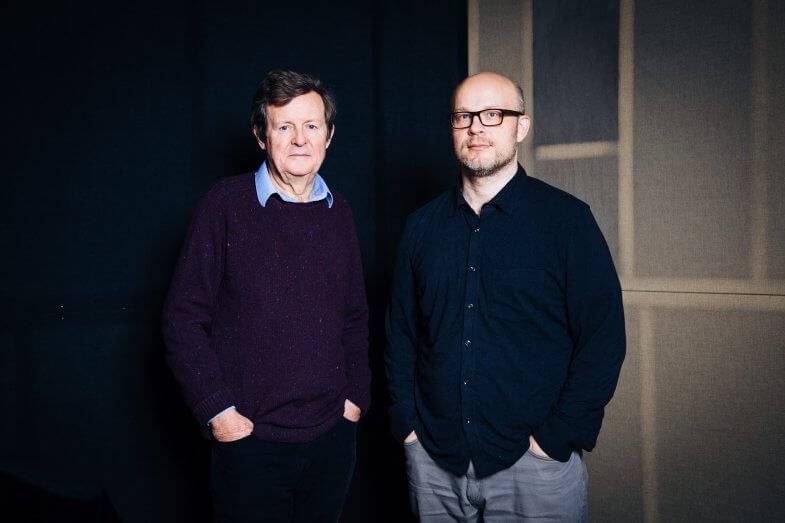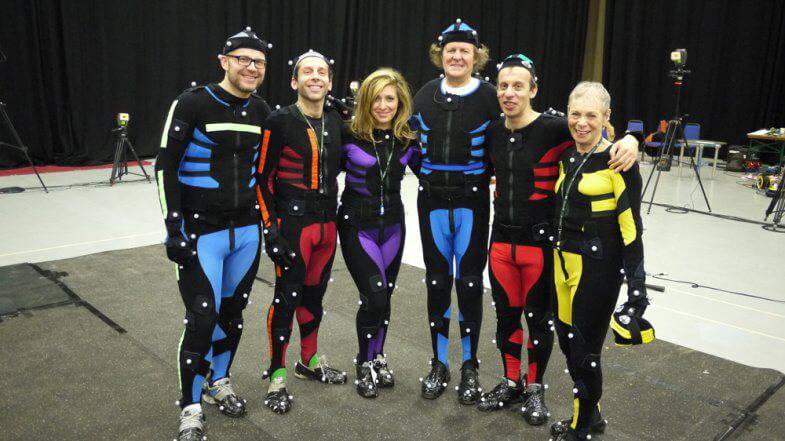Interview with ‘WALL’ director Cam Christiansen
WALL is a new feature film written by esteemed British playwright David Hare and adapted from his monologue of the same name. Approached by the National Film Board of Canada producers David Christensen and Bonnie Thompson to consider translating it to the medium of an animated feature, it would take seven years for the film to be fully realised using a progressive approach to CG animation and motion-capture crafted by award-winning animator and director Cam Christiansen.
WALL itself takes the form of a non-fiction excursion to the Middle East in which Hare examines the political and social impact of the 708 kilometre wall that separates Israel and Palestine, an issue that has become even more prescient in the years since the film was originally conceived.
Having screened at several prestigious festivals including the Calgary International Film Festival 2017, the Santa Barbara International Film Festival, the Copenhagen International Documentary Film Festival and Sommets du cinéma d’animation, WALL will this week be among the selected features in competition at the Annecy International Festival of Animated Film with its UK premiere to follow next week at the Edinburgh International Film Festival and a further screening next month at Anima Mundi.
Skwigly were able to learn more about the coming together of this unique and powerful animated feature from Calgary-based director Cam Christiansen, whose prior work includes the short films I Have Seen the Future (2007) for Bravo!FACT and the prior NFB collaboration The Real Place (2009).
To begin with can you tell us a bit about your background and path to filmmaking?
I have had a very unexpected path to becoming a filmmaker. I studied painting and industrial design and worked as a designer for many years. At one point, about 15 years into having a design company, I had a slight creative crisis. I really missed doing purely creative projects and set out to change that. So I started making animated short films just for fun, with friends. To my great surprise, they took off and were seen all around the world. Since then I have been fortunate enough to continue on this path. I also learned the power in doing things just for the fun of it, as it led to great things like our feature WALL.
How did your earlier collaboration with the NFB The Real Place come about?
As I mentioned, I had started making short animated films, which came to the attention of NFB producers. I also met NFB producer Bonnie Thompson at a conference. Later they asked me to do The Real Place, which was great.
Your work tends to involve non-fiction subjects, is this an area of filmmaking you’d say you gravitate toward (and if so, why would you say that is)?
It’s not a preference per se, but rather a process where we started to see interesting things happening in The Real Place and decided to expand on it. For example, we felt animation allows you to get into the subject’s thought process in a way that would be very different with live action. It’s more poetic and visual. This seemed exciting and was something we wanted to develop further with WALL.
How did David Hare and yourself come to work together – had you collaborated previously before WALL?
No, it’s the first time. It was a great privilege to work with him, as I admire his work so much. He was very enthusiastic about making an animated film, as he has never done anything like it. Nor had I on this scale, so we took the plunge together, so to speak, and it was great fun.

David Hare and Cam Christiansen (Photo: Jennifer Rowsom)
The style of WALL stands out as being a particularly unique approach to CG visualisation. Can you tell us a bit about how you developed the look of the film?
I’m glad to hear you say that, as I really tried to give the film a unique artistic sensibility. I wanted the film to have a feeling that it was made by the hand of an artist, even though there is a lot of CG. As a result, there are literally thousands of hand-drawn textures and drawn animated sequences. I focused on having brush marks be raw, messy and textural. This is a different approach than a typical animation that strives for a polished look or photographically reproducing reality.
With a production length of seven years was it a challenge to keep the overall look and feel of the final film consistent?
Not really, because animation requires many, many versions before it looks presentable. As a result, as you develop the style, you are able to incorporate the new stylistic thinking in the next versions. Sometimes it’s a radical departure that has a deep impact on your shots, or it can be a simple adjustment. Either way you try to elevate all the shots to your stylistic goals throughout.

Left to right: Cam Christiansen, Elliot Levey, Tracy Ann Oberman, David Hare, David Schneider, Sara Kestelman (Photo: Mark Power)
As animated features are a relatively new venture for the NFB, how was your experience working with them and to what extent were they involved creatively/production-wise?
It’s true, I believe they had co-produced only one other animated feature before in their history. So we were breaking a lot of new ground. A lot of the reason they were willing to do it was that I had developed many unorthodox techniques to make this possible with a small crew. They were great about exploring this, and we took a number of risks together. This included developing our own software and techniques. They were very involved and I met with them regularly. It was a rigorous process, looking at story and image constantly.
What would you say are the main benefits of using animation to tell these types of stories over live-action or other more traditional documentary practices?
Given that the West Bank is under military occupation, the possibility of shooting a live-action film at checkpoints was very doubtful. So in this case, animation enabled us to tell a story you couldn’t have told otherwise. Further, it allows opportunities to express ideas and thoughts in a visual and metaphorical way. You can also bring inanimate objects to life, as we did with the graffiti on the wall. The Israeli-Palestinian conflict has gone on for so long, our hope was also that using animation may help the viewers see the material in a fresh way.
How has the initial reaction to the film been?
Occasionally, we will have people who take issue with points in the film and are upset by certain aspects. It is such a divisive issue, this came as no surprise. That said, the feedback is usually very overwhelmingly positive, and people are struck by the power of the images and the insights of the words. What has surprised me the most is how varied views are within the Muslim and Jewish communities. If you just listen to the news, you would expect them to both be very rigid and monolithic. To date, this has not been my experience, and I find this welcome and encouraging.
Moving forward would you be keen to carry on making full-length features or is there any interest in returning to shorts?
My current plan is to move into live-action features. I’m content to give animation a rest after such an intense and long project. I’m developing a film around a topic I found to be as equally divisive and hot button as Israel/Palestine, namely love and relationships. Who knows, I may consider going back to animation, but not right now. Over all, I’m just interested in storytelling; the medium I use is secondary. I’m even making music and trying to tell stories in that medium as well.
Festivalgoers can catch WALL every day this week at Annecy in the category Feature Films in Competition 3.
The film’s UK premiere will take place June 23rd as part of the Edinburgh International Film Festival’s Focus on Canada strand.


